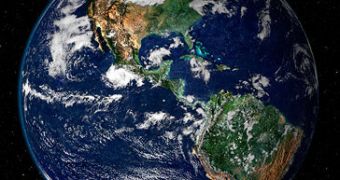On May 24, 2013, an 8.3M earthquake hit under the Sea of Okhotsk in the western Pacific Ocean. The shake struck at a depth of 609 kilometers (378 miles), and scientists did not take long to label it the largest deep earthquake on record.
Oddly enough, they are still trying to figure out how and why it happened.
Thus, investigations carried out by geologists revealed that this particular shake generated seismic movement some 30% larger than that linked to another major quake that hit at a depth of 637 kilometers beneath Bolivia back in 1994.
Specialists estimate that, all things considered, the 2013 earthquake under the Sea of Okhotsk released about as much energy as 35 megatons of TNT exploding all at once. Hence the fact that it was recorded by thousands of seismic stations around the world.
Scientists theorize the Sea of Okhotsk earthquake released three times more energy that the one under Bolovia due to the fact that the temperature in the area where it occurred was lower.
Thus, they say that, because of these lower temperatures, the diving of one plate of the Earth's crust under another led to rapid breaking and slippage instead of allowing for deformation.
“It looks very similar to a shallow event, whereas the Bolivia earthquake ruptured very slowly and appears to have involved a different type of faulting, with deformation rather than rapid breaking and slippage of the rock,” researcher Thorne Lay explains.
“In the Bolivia event, the warmer slab resulted in a more ductile process with more deformation of the rock,” the researcher further details.
The most interesting thing about the Sea of Okhotsk quake is that, judging by the laws of physics, it should not have happened. Thus, researchers say that the rupture that caused the shake should have been prevented by the intense pressure acting on the quake's epicenter.
“It's a mystery how these earthquakes happen. How can rock slide against rock so fast while squeezed by the pressure from 610 kilometers of overlying rock?” says Thorne Lay with the University of California, Santa Cruz.
Still, the fact remains that, laws of physics aside, the shake did take place. What's more, it led to the formation of a rupture area that extended over 180 kilometers (111.8 miles) and that was created at a speed of about 4 kilometers per second (2.5 miles per second).
Specialists suspect that the presence of fluid in the area allowed one of the plates to slip under another and cause the shake. The only problem is that fluids don't usually exist at this depth, precisely because the pressure squeezes them out.
On the other hand, it is possible that the transformation of some minerals produced lubrication and kick-started the process. Presently, researchers are still trying to figure out what the earthquake's exact cause was.

 14 DAY TRIAL //
14 DAY TRIAL //